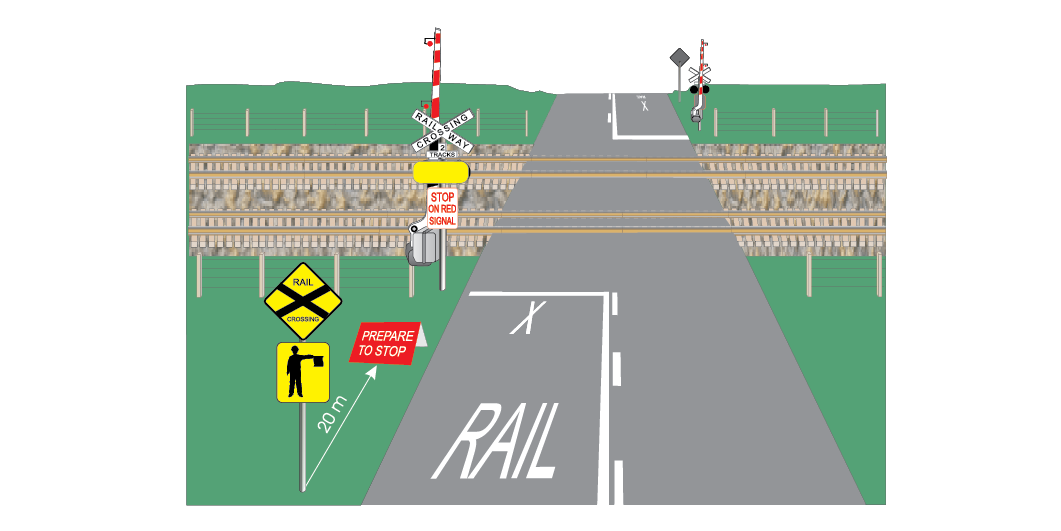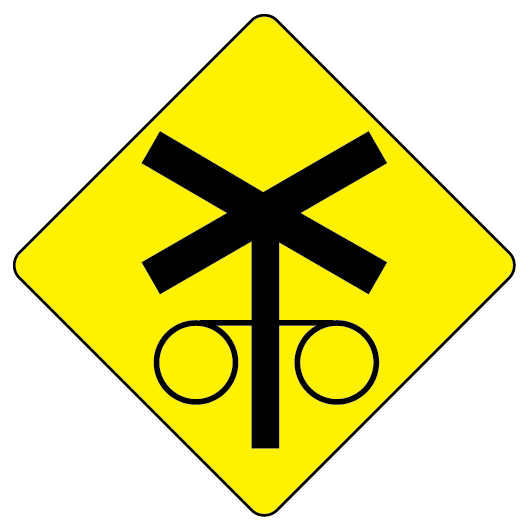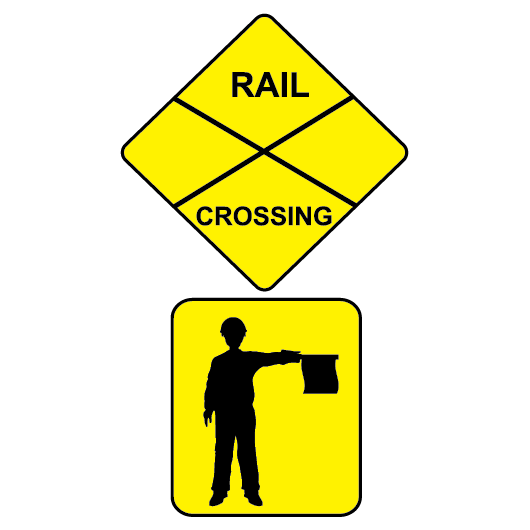Description
This document describes the procedure for using emergency roadside warning equipment.
Not what you are looking for? See more Procedures
Introduction
Emergency roadside warning equipment is used to warn road and pedestrian traffic at Type F level crossings if warning equipment:
- cannot be operated, or
- is to be disconnected.
It consists of:
- yellow covers for flashing lights
- combined RAIL CROSSING and HANDSIGNALLER signs
- PREPARE TO STOP signs
- hand-held STOP signs.
Where necessary, emergency roadside warning equipment must be used on both sides of the crossing.
Setting up emergency roadside warning equipment
Handsignaller
- If emergency roadside warning equipment is needed, arrange with the Signaller to get the equipment.
- Get the Test and Emergency keys from the controlling location.
- Cover the existing roadside advance warning signs with the combined RAIL CROSSING and HANDSIGNALLER signs.
- Place a PREPARE TO STOP sign 20m closer to the level crossing than the combined RAIL CROSSING and HANDSIGNALLER signs.
- Place yellow covers over the level crossing lights.
- Open the Test and Emergency boxes.
- Insert the keys in the Emergency switches.
- Set Emergency switches to OFF.
- Tie a rope to the top cross-brace of each road boom.
- Fully raise the booms by hand, and tie them to the post.
Be careful not to damage the booms.
- Do not tie pedestrian boom arms.
Managing road and pedestrian traffic
Handsignaller
- Raise pedestrian booms or open gates, as required, to allow pedestrians to cross.
- When rail traffic approaches the level crossing, use the hand-held STOP sign to stop road and pedestrian traffic.
- Make sure that pedestrian gates are closed or pedestrian booms are lowered.
- After road and pedestrian traffic has stopped, give a PROCEED handsignal to the Driver or Track Vehicle Operator. Make sure that road and pedestrian traffic does not act on your signal.
- When rail traffic has fully cleared the level crossing, and if no other rail traffic is approaching, direct road and pedestrian traffic to proceed.
Returning to normal operation
Signaller
When told by the Maintenance Representative that the warning equipment is certified as working correctly:
- Tell Handsignallers to test the level crossing and return it to normal operation.
- Record the details in permanent form.
Handsignaller
- Make sure that the Test switch is set to NORMAL.
- Make sure that all Emergency switches are ON.
- Make sure that the Master Emergency Switch (if fitted) is set to NORMAL.
- Remove the keys from the Emergency switches.
- Untie ropes from the post.
- Set the Test switch to TEST.
- Check that all warning equipment works correctly.
- Untie ropes from the top cross-brace of road booms.
- Return the Test switch to NORMAL.
- Check that all warning equipment stops operating.
- Remove emergency roadside warning equipment.
- Lock the Test and Emergency boxes.
- Tell the Signaller that the level crossing is operational.
- Arrange for emergency roadside warning equipment to be returned.
- Arrange for the Test and Emergency keys to be returned to the controlling location.



